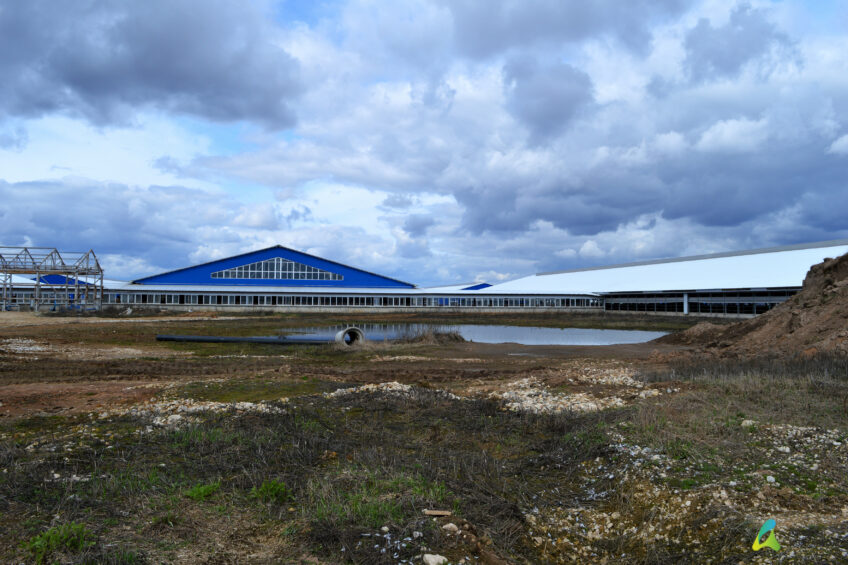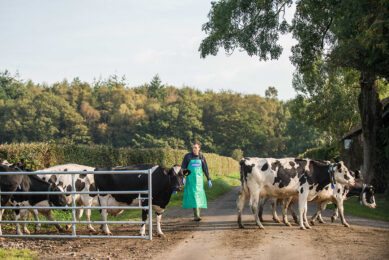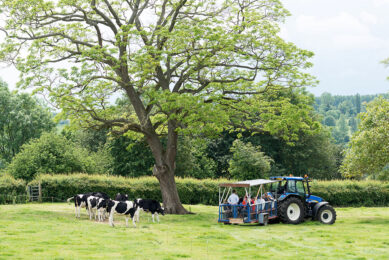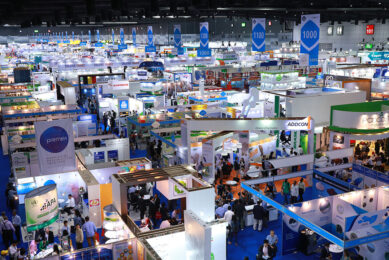Is there a future for private Russian dairy farms?

At the beginning of September 2016, the Russian Union of Dairy Producers (Soyuzmoloko) presented its new draft programme to the Russian government in order to support the domestic dairy industry between 2017-2025. But is this good news for private Russian dairy farmers?
The new programme involves major investments in the form of subsidies, totalling RUB 40 billion (US$800 million). This programme has been developed by the major market participants and aims to increase the raw milk output in the country until 2025, as well as improvement of effectiveness at Russian dairy farms.
Plan could bankrupt of 500,000 dairy farmers
However, the details of the programme mostly raised negative reactions amongst Russian analysts and private farmers and in particular the research agency Center for the Study of the Dairy Market (CSDM). Representatives of the organisation pointed out that the plan involves the actual decrease in the number of dairy cattle in Russia by 2 million heads, which could lead to the bankruptcy of up to half a million dairy farmers across the country. So why are the Russian farmers so unhappy about the support programme, including the large amount of funding? The reason lies in the way that the money will be distributed. The money will be spent on subsidising loans and reimbursing the construction of new facilities. Dairy farmers fear that smaller farms are not able to have access to these funds.
Efforts to reverse negative trends
According to figures of Soyuzmoloko, the dairy herd in 2015 in Russia was reduced by 2% to 8.3 million heads. According to data of the Russian State Statistical Service (Rosstat), Russia lost 75% of its dairy herd since independence from the Soviet Union in 1990. At the same time, the state never stopped supporting the dairy industry. The continuous support has been rather crucial, as according to the estimations of Vladimir Labinov, head of the livestock department at the Russian Agricultural Ministry, profitability of milk production in Russia will be more than 7% less, if there would be no state support.
Industrial and private farms
According to Labinov, the main profitability problem in dairy farming in Russia is associated with weak performance indicators. At the moment, a cow produces about 5,223 kg of milk per year on average. In recent years, also the gap between 2 different categories of dairy farms in Russia has been increased. Russia now has industrial farms and private farms. Industrial farms reach a productivity per cow that is 30-40% higher, compared to the private farms. This is the result of more capital resources and because they have almost all the breeding cattle in the country.
According to the Agricultural Ministry, it is the private farm category that is contributing to the overall negative situation in Russian dairy farming. In 2015 for example, the Russian dairy industry increased milk yield per cow by 6.9%. However, almost all of it was seen in the industrial sector, with an average growth in milk yield of nearly 9.2%. In the private sector, growth of milk yield was almost zero. As a result, the private farmers have created a negative image for the Russian milk industry.
According to the head of Soyuzmoloko, Andrey Danilenko, Russia has produced 30.8 million tonnes of milk over the last couple of years. Russia imported about 8 millions tonnes of milk. Speaking at a press conference in mid September 2016, he said that with more transparency and clear rules in the market, Russian dairy producers have the ability to increase volume of raw milk production nearly four times to about 80 million tonnes.
Keep the state support
The CEO of Soyuzmoloko, Artem Belov, believes that the introduction of direct subsidies to dairy farmers 2 years ago brought immediate results to the industry. This resulted in an increase in gross production of raw milk for the first time after several years of decline. This is why state support remains essential, according to Belov. He sees advantages in keeping the support, which involves subsidising interest rates on bank loans, subsidy payment of RUB1 (US$0.015) per 1 litre of raw milk, as well as the reimbursement of 20% of the capital costs for constructing and reconstructing of farms. As a result, between 2014-2017, the overall state investments in the Russian dairy industry amounted to RUB26.6 billion (US$421 million). According to representatives of Soyuzmoloko, this brought a second boost to the Russian dairy industry.
20% more milk
At the moment, the actual deficit of milk production in Russia amounts to 7.2 million tonnes. In 2020, this figure could significantly grow amid the forecasted rise in demand for dairy products in the country of nearly 20%. The state support programme aims to increase milk production by 16% to 33.9 million tonnes between 2017 and 2025. This means that RUB60 billion (US$800 million) is being spent on the following:
- the creation of a unified system of identification of animals; establishment of industry associations in certain breeds
- establishment of institutions, information centres of these associations
- establishment of independent genetic and dairy laboratories
- development of innovative technologies for breeding dairy cattle as well as optimisation of directions of state support
Most money will be spent on breeding cattle. Support of private farmers are almost not accounted for.
Competitive advantage
At the same time, the Center for the Study of Dairy Market (CSDM) published a report, in which it blames Soyzmoloko for obtaining strong competitive advantage for its members and pushing small farmers out of the market. Mikhail Mishchenko, head of CSDM explains: “The real purpose of the programme is very simple: the concentration of production [capacities], reduction in the number of entities receiving state support, and the concentration of this support in the hands of those who remained.” The actual target of the plan, according to Mishchenko, is the creation of some sort of private club of milk manufacturers in Russia. “The members who want to sell their milk at a high price, plus having the state support,” Mishchenko adds.
The fears of dairy farmers and analysts are associated with the fact that the proposed programme involves significant reduction in the number of dairy cattle in the country. According to the programme outline, the average milk production per cow is expected to grow by 35% in 2025, compared 60% growth in 2015. This means that the share of domestic milk, compared to the total consumption, should reach 91% versus 74%, while dairy herd numbers are expected to drop by 27%.
New dairy programme – could do more harm than good
According to Mishchenko the programme for improvement of effectiveness may actually not be so effective. And there are several analysts who are in full agreement with him. They claim that, in general and despite arguments of Soyuzmoloko, the new plan will bring more harm than benefit to Russian dairy industry. In particular, as explained by Cyril Yakovenko, analyst at the country’s consulting agency Alor broker, implementation of the programme will result in a reduction of competition at the market. This is because the ‘big players will get the subsidies and discounts from the state, while the small farmers continue to fight against bureaucratic obstacles because they are a minority.
Dmitry Lukashov, analyst at IFC Markets, claims that this plan will lead to “creation of an oligopoly or a private club of manufacturers who will control the largest stake of the Russian dairy market. And this situation will eventually lead to degradation of the industry. Kirill Morozov, CEO of the analytical agency M9 AGRO, says that this plan “aims to not improve the situation, but to create a high threshold to enter the market for smaller players,” The new programme is currently being reviewed by the government. After some public hearings, it should be adjusted and adopted. This will most likely happen at the end of 2016.
Join 13,000+ subscribers
Subscribe to our newsletter to stay updated about all the need-to-know content in the dairy sector, two times a week.













